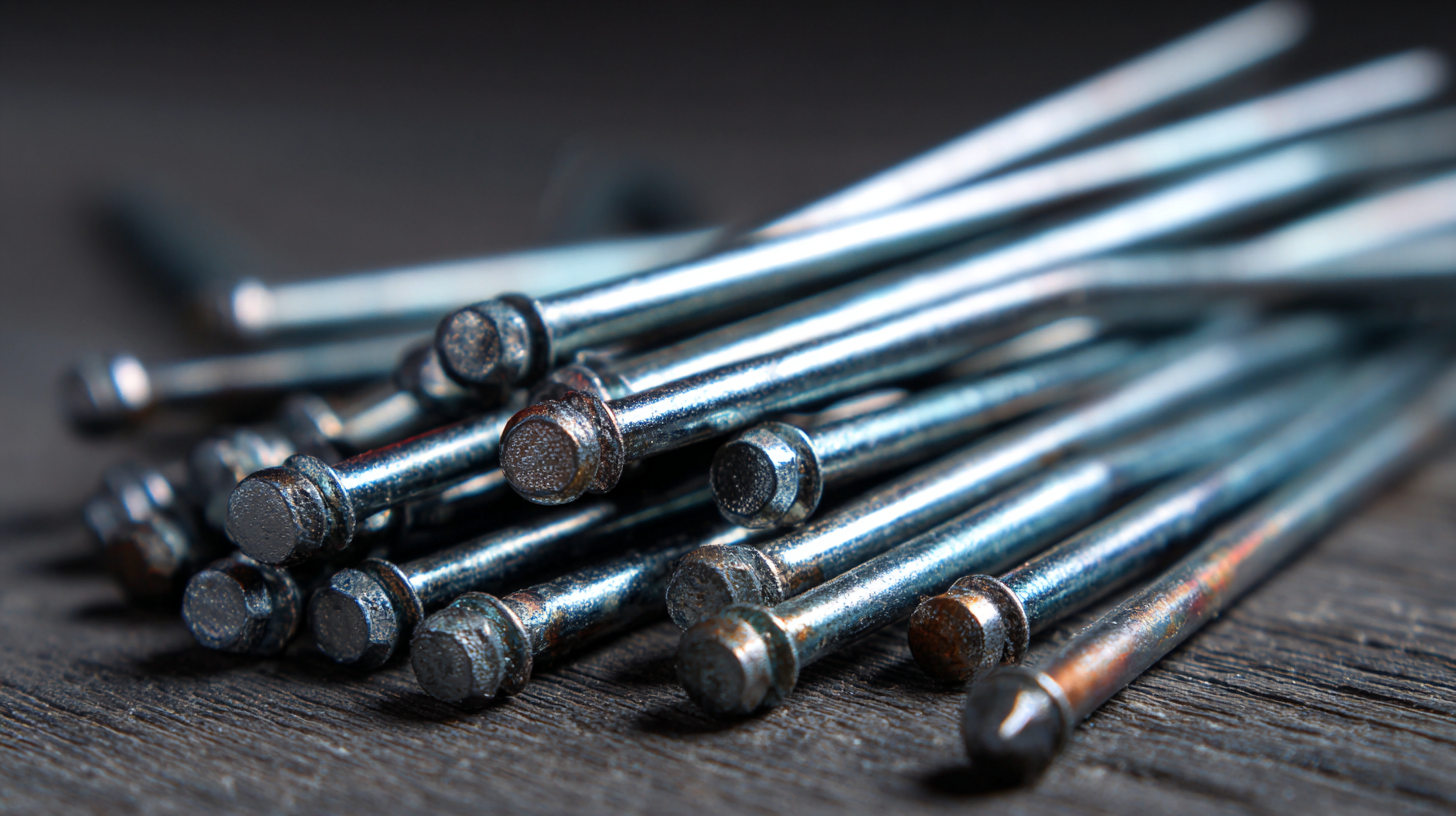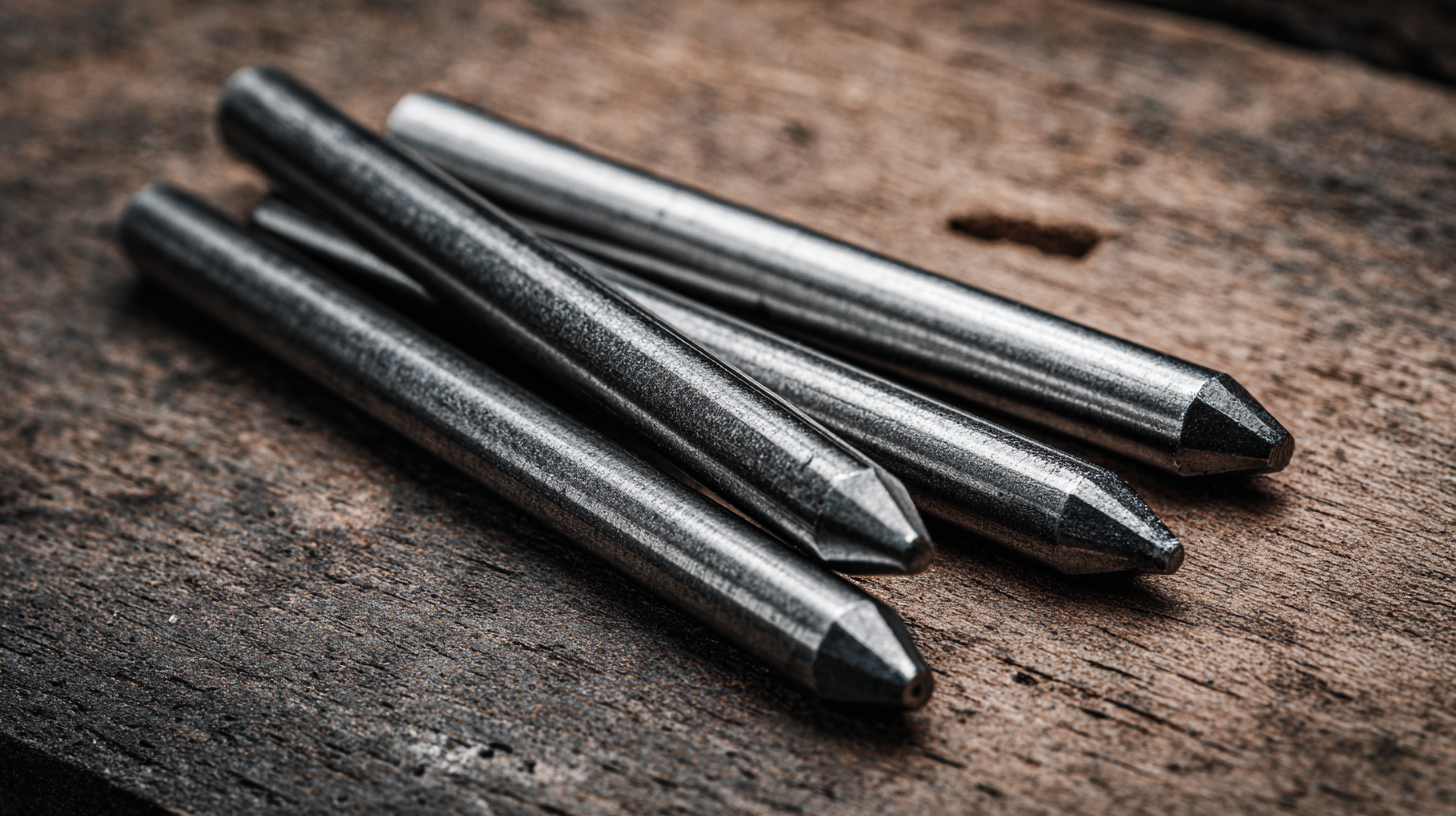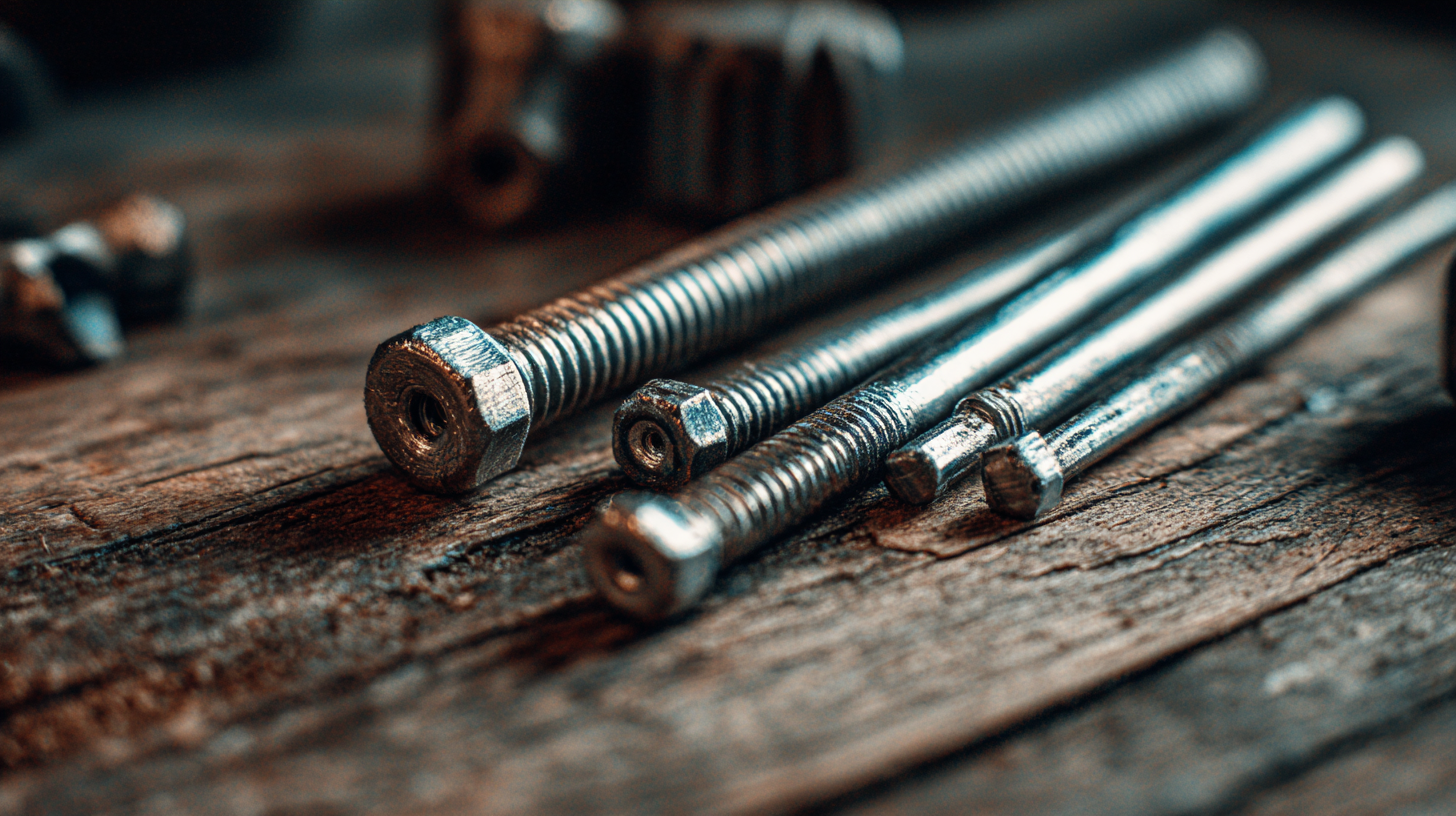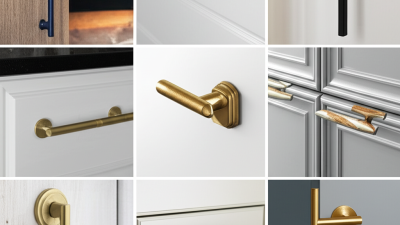
- wzqb@qb-inds.com
- Mon - Sat at 7:00AM to 6:00PM
Top 5 Tips for Sourcing the Best Cotter Pins Worldwide
Table of Contents
- Understanding Cotter Pins: Types and Their Advantages in Various Industries
- Key Metrics: Market Demand for Cotter Pins Across Different Sectors
- Evaluating Quality: Standards and Certifications for Cotter Pins by Manufacturers
- Global Sourcing Strategies: Identifying Reliable Suppliers for Cotter Pins
- Cost Analysis: Balancing Quality and Price in Cotter Pin Procurement
- Sustainability Trends: Eco-Friendly Materials in Cotter Pin Production
- FAQS
- Conclusion
- Related Posts
You know, in the fast-changing world of global manufacturing, people are really craving top-notch fastening solutions like the trusty Cotter Pin. If you look at the industry trends, the fastener market’s expected to hit around $118.5 billion by 2025 — mainly because of breakthroughs in automotive, aerospace, and machinery technology.

Companies like Wenzhou Qiangbang Industrial Co., Ltd., which has been around since 2003 and focuses on developing high-quality manufacturing parts, understand how crucial it is to find the best Cotter Pins across the globe. It’s all about making sure everything stays precise and reliable during production.
When choosing your supplier, paying attention to things like quality of materials, reputation, and whether they meet international standards can really make a difference. This way, you can streamline your supply chain and overall product performance.
In this post, I’ll share five key tips to help you find the top Cotter Pins — so your operations stay smooth and up to date with the best industry practices.
Understanding Cotter Pins: Types and Their Advantages in Various Industries
Cotter pins might seem like small parts, but they actually play a huge role across a bunch of industries—think automotive, aerospace, and construction. Getting to know the different types, like standard, locking, and split cotter pins, can really make a difference in how smooth operations run and how safe everything is. Fun fact: according to the Industrial Fasteners Institute, about 15% of failures involving fasteners in critical situations happen because of the wrong choice or just not fully understanding how these tiny pins work.

For example, in the auto world, using good quality locking cotter pins can be a game-changer—preventing parts from coming loose when the car vibrates and helping keep everything safe on the road. MarketsandMarkets even says that the global market for automotive fasteners is expected to hit around $26.4 billion by 2026, which shows just how important reliable fasteners like cotter pins are for staying competitive and safe. And in aerospace, split cotter pins are super popular because they can handle extreme conditions and keep things securely connected. So yeah, understanding the different types and their benefits isn’t just nerdy stuff—it really matters when you’re sourcing the best cotter pins out there worldwide.
Key Metrics: Market Demand for Cotter Pins Across Different Sectors
Getting a solid grasp on the market demand for cotter pins across different industries is pretty important if you're serious about sourcing the best options worldwide. These little pins are used all over—think automotive, aerospace, construction—and each sector has its own specific needs when it comes to grades and specs. For example, the auto industry, in particular, has a pretty high demand because cotter pins play a critical role in keeping vehicle parts secure. That’s why finding pins that meet strict safety and quality standards isn't just a good idea — it’s a must.
Now, if you’re trying to source these pins effectively, here are a few tips that might help. First off, build strong relationships with suppliers who have a solid reputation. Trust me, this makes a huge difference—it’s not just about getting a steady supply but also about negotiating better deals and making sure the quality is up to snuff. Next, stay in the loop about recent market trends and new tech developments because these can directly impact how long the pins last and how well they perform. And finally, don’t forget to check how flexible your suppliers are—are they open to custom orders? That can be a real game-changer when you’ve got specific needs for different projects.
Focus on these key points and adopt some smart sourcing strategies, and you’ll be better equipped to stand out in the competitive cotter pin market while also making sure you’re meeting the unique demands of each industry you work with.
Evaluating Quality: Standards and Certifications for Cotter Pins by Manufacturers
When you're out sourcing cotter pins, it's really important to pay attention not just to finding any pins, but to understanding the quality standards and certifications that manufacturers claim to meet. Honestly, these tiny components are often the unsung heroes—they're critical for holding everything together, whether you're dealing with cars, planes, or pretty much any machine. You know, according to ISO (that’s the International Organization for Standardization), certified cotter pins need to follow strict quality rules. This means they should be able to handle tough conditions without failing, keeping everything safe and reliable.

One certification you should keep an eye on is ASTM F10. It really underscores how crucial the mechanical and chemical properties are during manufacturing. A report from the American Society for Testing and Materials points out that cotter pins made with top-notch materials like stainless steel or alloy steels tend to beat out cheaper ones—they’re stronger, more resistant to rust, and generally last longer. Plus, if a manufacturer is certified under the AS9100 standard, it’s a good sign they’re serious about quality management—making sure their products meet high safety and performance standards. When you’re choosing a supplier, this kind of attention to detail really counts—it’s the difference between a pin that just works and one you can trust to keep things safe and secure in the long run.
Global Sourcing Strategies: Identifying Reliable Suppliers for Cotter Pins
When you're sourcing cotter pins from around the world, finding reliable suppliers is majorly important if you want to keep your quality consistent. I mean, start by checking out their reputation in the industry and making sure they’ve got the right certifications. It’s smart to go with companies that meet international quality standards — that way, you dodge the common headaches that come with dodgy materials. Also, picking suppliers who’ve got a solid track record of actually delivering cotter pins can give you a good idea of whether they’re dependable and how their products hold up.
Plus, don’t forget to use online platforms and trade shows as a way to meet different suppliers from various regions. Websites, online marketplaces, forums — they’re all pretty useful for reading reviews and hearing what other buyers have experienced. And honestly, it’s always worth requesting samples first, so you can see the quality with your own eyes before you go all in. Communicating clearly is key, too — understanding if they can ramp up production whenever you need it is a big part of building a good partnership. If you follow these tips, navigating the whole global sourcing thing will be way easier, and you’ll end up with some really solid cotter pins for your projects.
Cost Analysis: Balancing Quality and Price in Cotter Pin Procurement
When you're looking to buy cotter pins, doing a solid cost analysis is super important to find the right balance between quality and price. Honestly, just going for the cheapest option isn’t always the smartest move—that tiny saving upfront could cost you more in the long run. It’s worth taking a good look at things like what the pins are made of, how they're manufactured, and who’s supplying them.
Sometimes, a slightly pricier pin that’s made with better materials can save you headaches later—fewer failures and less ongoing maintenance, you know?
And don’t forget about the bigger picture: total cost of ownership. The sticker price is just one part. Shipping fees, storage costs, and even downtime from a bad batch can really add up. Investing a bit more in high-quality cotter pins might seem like a splurge at first, but it can actually boost your reliability and make your operations run smoother. Over time, those savings really start to add up. So, when you're making these decisions, taking a careful look at all these factors helps you pick options that are both smart on the wallet and good for your business’s overall efficiency.
Sustainability Trends: Eco-Friendly Materials in Cotter Pin Production
You know, these days, sourcing eco-friendly materials for making cotter pins isn’t just a good idea — it’s kinda essential if companies want to stay ahead when it comes to sustainability. Come 2025, it looks like the chemical industry is really gearing up to push some serious innovation, focusing on adhesives that are recyclable, biodegradable, and made from renewable resources. The cool part? These new adhesives are designed to fit right into the existing manufacturing processes without much hassle. Not only does this help tackle the urgent need to be kinder to the planet, but it also actually makes the final products more durable and better in performance.
And speaking of green tech, advances like electrolysis for hydrogen production are actually helping make manufacturing cleaner and less harmful to the environment. These innovations can cut down the carbon footprint pretty significantly compared to traditional methods. As consumers grow more aware and intentional about sustainability, brands that put eco-friendly stuff front and center are probably going to have an edge over the competition. By adopting these greener practices, manufacturers aren’t just helping protect our planet — they’re also meeting the changing expectations of customers who really care about the environment these days.
FAQS
: Cotter pins are essential fasteners used in various industries such as automotive, aerospace, and construction to secure components and enhance safety.
The main types of cotter pins include standard, locking, and split cotter pins, each serving different functions and advantages based on the application.
Locking cotter pins help prevent components from loosening due to vibrations, thereby enhancing the safety and reliability of vehicles.
A cost analysis is crucial to balance quality and price, ensuring that businesses invest in cotter pins that provide long-term value and reduce maintenance costs.
The total cost of ownership includes not only the purchase price, but also shipping costs, storage expenses, and potential downtime costs from product failures.
There is increasing demand for eco-friendly materials like recyclable and biodegradable options in cotter pin production to meet consumer expectations for sustainability.
Innovations such as greener manufacturing processes and electrolysis methods for hydrogen production are helping reduce the carbon footprint of cotter pin production.
Higher-quality cotter pins typically result in lower failure rates and reduced maintenance, ultimately leading to cost savings over time.
Understanding the different types of cotter pins and their advantages is crucial for selecting the most suitable ones for specific applications, ensuring safety and operational efficiency.
Companies that adopt sustainable practices and use eco-friendly materials are likely to attract environmentally conscious customers and enhance their market position.
Conclusion
In our latest blog, 'Top 5 Tips for Sourcing the Best Cotter Pins Worldwide,' we dive into some pretty essential insights about these tiny but mighty components that are used across so many industries. If you've ever wondered about the different types of cotter pins out there and what makes them better, we've got you covered—knowing this stuff really helps when you're trying to make smart purchasing decisions. We also look at key market trends, showing which sectors are demanding these fasteners, so businesses can spot some pretty cool opportunities. Plus, we stress how important it is to evaluate quality—making sure your cotter pins meet industry standards and certifications is a must if you want reliable parts.
We also talk about sourcing from around the globe—finding suppliers you can trust, without losing your mind over costs. Speaking of costs, our tips include how to strike that sweet balance between good quality and wallet-friendly prices. And, since everyone’s jumping on the sustainability train these days, we touch on how eco-friendly materials are playing a bigger role in making cotter pins. At Wenzhou Qiangbang Industrial Co., Ltd., we're all about supporting high-end manufacturing with top-notch parts, and hopefully these tips help you up your sourcing game too.
Related Posts
-

Exploring Unique Alternatives to Traditional Knobs for Modern Design
-

Setting New Industry Standards for the Best Lead Screw Quality and Performance
-

Ultimate Comparison of Best A325 Options for Global Buyers
-

How to Identify Quality Suppliers for Best D Shackles with Essential Evaluation Checklist
-

Understanding the Technical Specifications of the Best Lynch Pin for Optimal Performance
-

Leading the Global Market with the Best Socket Head Cap Screws Made in China
